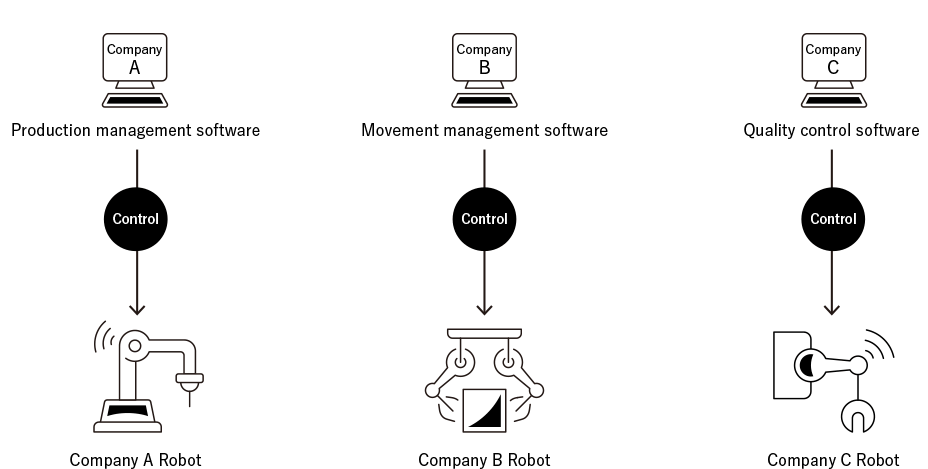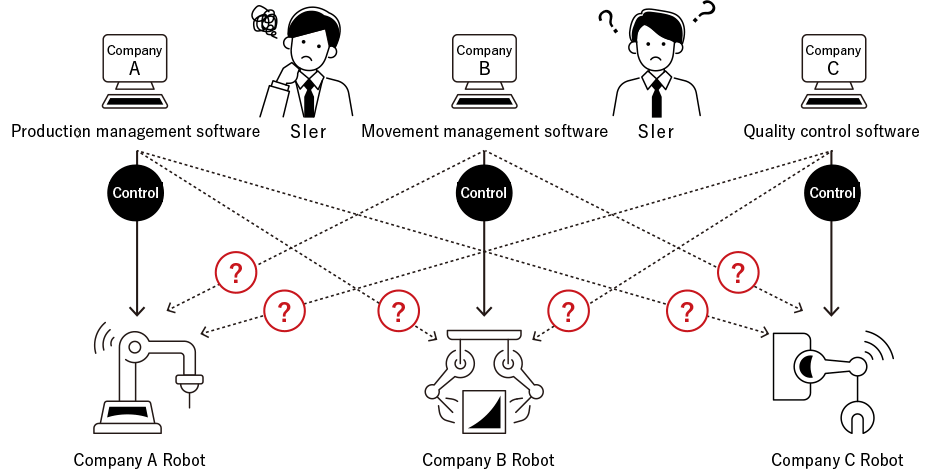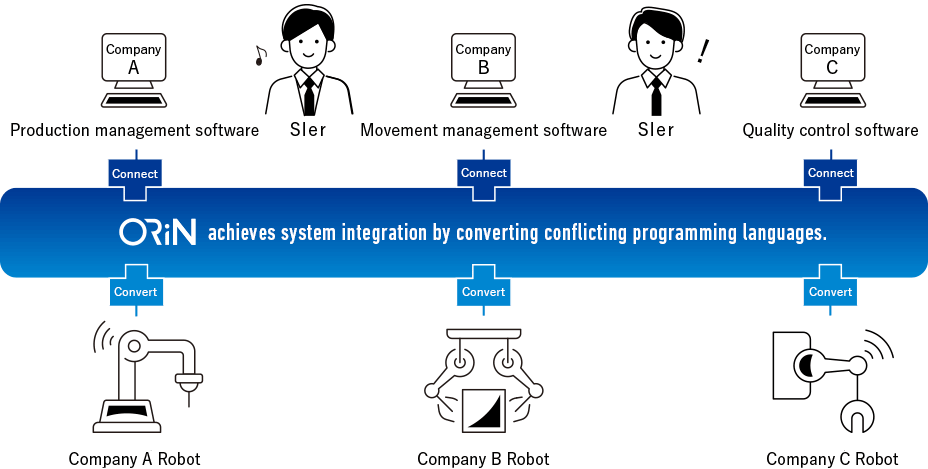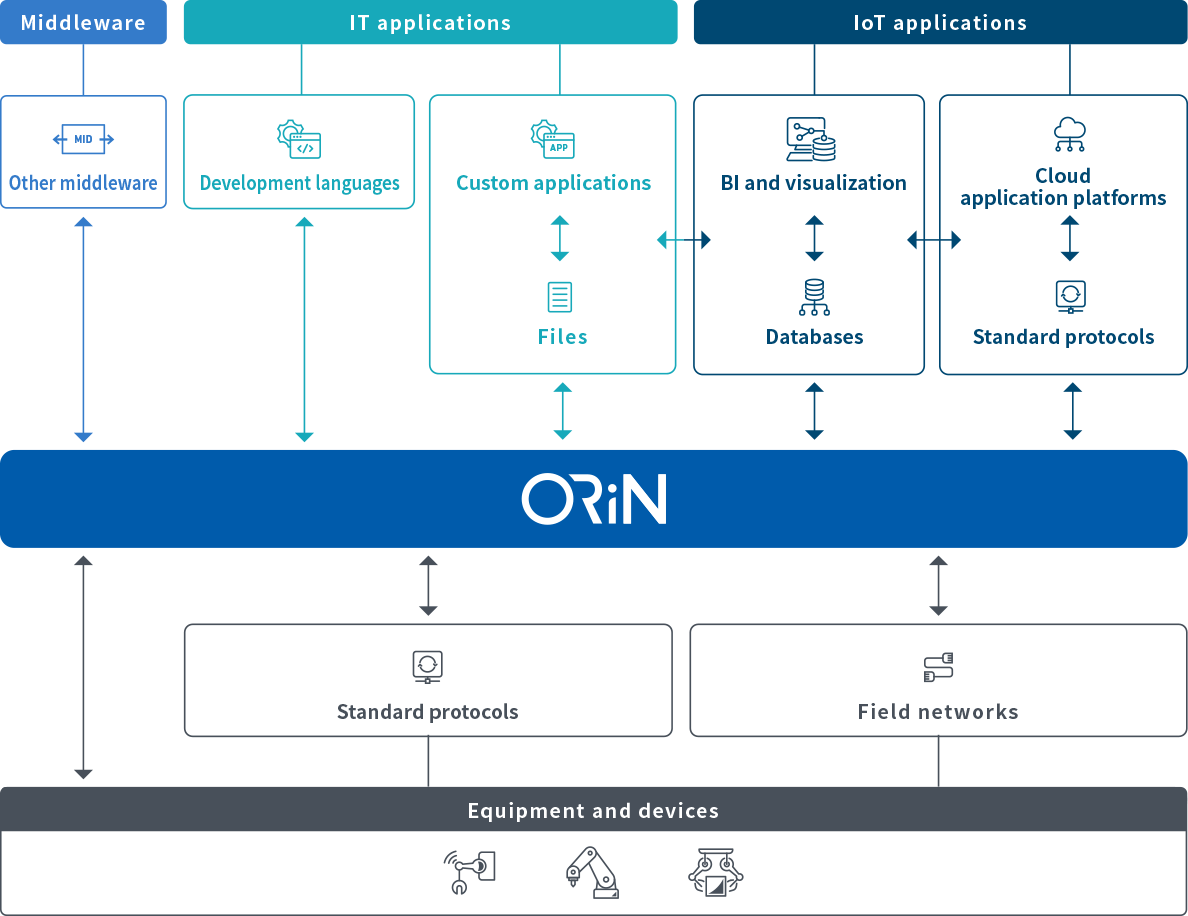Middleware to connect all facilities
Far too many data communications standards and programming languages exist, but ORiN integrates them into one
Since the 1990s, when IT fields started to grow at an accelerated pace, manufacturers have competed to develop a wide range of machines. Their data communications standards and programming languages differ depending on which companies developed them and when they were developed. This created the need for software to learn all of the different languages to try to integrate systems in different facilities. This is an enormous workload, which can be reduced with ORiN. All these different languages can be converted into one language with ORiN, so the software has to learn just one language.
-
- Background
- Manufacturers across the world have developed robots and machines controlled by their own software, and introduced them into factories.

-
- Problem
- Achieving integrated control requires many programs to be rewritten, which overloads system integrators.

-
- Solution
- The birth of ORiN makes it possible to use a single programming language to bridge between devices that operate on different standards.

Development philosophy: "Harmonizing IT and IoT beyond the barrier of standards"
A variety of standards have competed for market share in the IT industry. ORiN accepts any standards flexibly and connects facilities that could not communicate before, bringing a new harmony to IT and IoT. Harmony, not competition, is ORiN’s development philosophy.
Connection is just a means, not a goal. In facilities connection, ORiN aims for a world where competition doesn’t divide, but manufacturers compete on a friendly basis and seek technological innovations for the future, with connected facilities.

